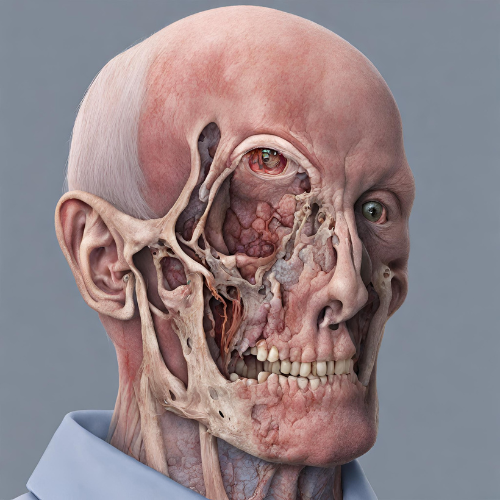Understanding Buerger’s Disease (Thromboangiitis Obliterans): A Comprehensive Guide
What is Buerger’s Disease (Thromboangiitis Obliterans)? Buerger’s Disease, also known as Thromboangiitis Obliterans (TAO), is a rare inflammatory condition that primarily affects the small and medium-sized arteries and veins in the arms and legs. It is characterized by inflammation, blood vessel occlusion (blockage), and the formation of blood clots, leading to reduced blood flow to the extremities.
Types of Buerger’s Disease: Buerger’s Disease is typically classified into two types:
- Thromboangiitis Obliterans (TAO): The most common form, characterized by inflammation and thrombosis (blood clot formation) in the blood vessels of the arms and legs.
- Atypical Buerger’s Disease: A less common variant that may involve blood vessel inflammation and thrombosis in other parts of the body, such as the abdomen or brain.
Symptoms of Buerger’s Disease:
- Pain in the arms or legs, especially during physical activity (claudication)
- Cold hands or feet
- Skin changes, such as pale or red discoloration, thinning, or shiny appearance
- Reduced sensation or tingling in the affected limbs
- Ulcers or sores on the fingers or toes
- Gangrene (tissue death) in severe cases
Causes of Buerger’s Disease: The exact cause of Buerger’s Disease is unknown, but several factors may contribute to its development:
- Tobacco use: Smoking or using other forms of tobacco is the most significant risk factor for Buerger’s Disease, with nearly all affected individuals being smokers.
- Immune system dysfunction: Some researchers believe that an abnormal immune response to tobacco components may trigger inflammation and blood vessel damage.
- Genetic predisposition: Certain genetic factors may increase susceptibility to Buerger’s Disease, although specific genetic markers have not been identified.
Risk Factors for Buerger’s Disease:
- Smoking: Cigarette smoking is the primary risk factor for Buerger’s Disease, with nearly all diagnosed individuals being current or former smokers.
- Age and gender: Buerger’s Disease typically affects young to middle-aged adults, with men being more commonly affected than women.
- Tobacco products: Other forms of tobacco use, such as chewing tobacco or pipe smoking, may also increase the risk of Buerger’s Disease.
Diagnosis of Buerger’s Disease: Diagnosing Buerger’s Disease may involve:
- Medical history and physical examination: Assessing symptoms, risk factors, and signs of peripheral artery disease.
- Blood tests: Checking for markers of inflammation and ruling out other conditions that may mimic Buerger’s Disease.
- Angiography: Imaging tests such as angiography or Doppler ultrasound to visualize blood flow and detect arterial occlusions.
- Biopsy: Removing a small tissue sample from an affected blood vessel for examination under a microscope to confirm the diagnosis.
Pharmacokinetics and Pharmacodynamics: Pharmacokinetics refers to how medications are absorbed, distributed, metabolized, and excreted by the body, while pharmacodynamics refers to how medications exert their effects. In the treatment of Buerger’s Disease, pharmacological interventions aim to alleviate symptoms, improve blood flow, and prevent disease progression.
Pharmacological Treatment:
- Smoking cessation: The most critical aspect of treatment is complete cessation of tobacco use to prevent further damage to blood vessels.
- Vasodilators: Medications that help dilate blood vessels and improve blood flow to the extremities.
- Antiplatelet agents: Drugs that inhibit platelet aggregation and reduce the risk of blood clots forming in affected arteries.
- Pain management medications: Analgesics or anti-inflammatory drugs to alleviate pain and discomfort associated with Buerger’s Disease.
Non-Pharmacological Treatment:
- Lifestyle modifications: Encouraging healthy lifestyle habits such as regular exercise, a balanced diet, and stress reduction to promote overall vascular health.
- Avoiding cold exposure: Protecting the hands and feet from cold temperatures to minimize vasospasm and reduce the risk of ischemic complications.
- Wound care: Proper wound care and ulcer management to prevent infection and promote healing in individuals with ulcerative lesions.
Conclusion: Buerger’s Disease (Thromboangiitis Obliterans) is a rare but serious vascular condition that primarily affects young to middle-aged adults, particularly smokers. Early diagnosis and prompt intervention are essential for preventing disease progression and reducing the risk of complications such as tissue necrosis and limb amputation. By understanding the causes, symptoms, diagnosis, and treatment options for Buerger’s Disease, individuals can take proactive steps to manage their condition effectively and improve their quality of life. If you or someone you know experiences symptoms suggestive of Buerger’s Disease, it is essential to seek medical attention promptly for evaluation and appropriate management.




